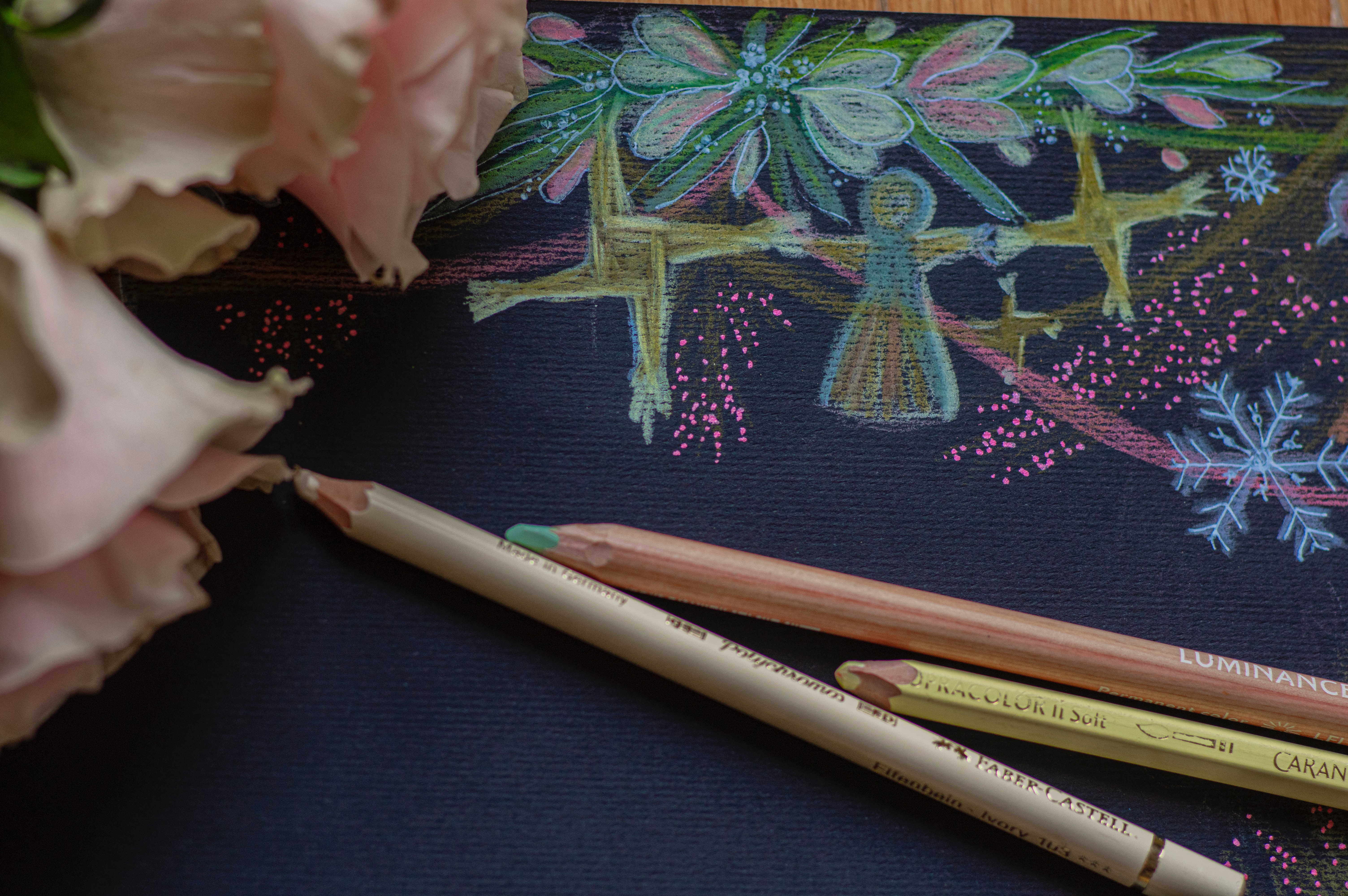Thoughts on deity imagery and its connection to Polytheistic Monasticism.

(Image description: A photo of a drawing of a Brighid’s cross, a harvest doll, and garlands featuring snowflakes and flowers. Three colored pencils are near the illustrations, along with pink flowers.) Credit: Photo by Elena Mozhvilo on Unsplash
Within different forms of modern Paganism and Polytheism, depictions of deities lean toward a more medieval or ancient appearance. There’s nothing wrong with these images, but I have been wondering about the relationship between this issue and Polytheistic Monasticism.
A standpoint some people may have with Polytheistic Monasticism is that there aren’t explicit historical references to contemplative practices of ancient druids, monks, nuns, priests/priestesses/priestx, or fill-in-the-blank term for clergy. However, the movement doesn’t have to include a strictly reconstructionist aspect to it. Similarly, deity art can be inspired by what we do have from ancient cultures and bring those aspects into the contemporary era.
As an aside, this is where modernity can dip into Pop Culture Paganism, which has been and is a controversial topic within the larger Pagan and Polytheist community. If it’s anything taken from television, comics, books, or movies, it can considered too secular or too simplified to be considered sacred.
Sometimes, something sacred doesn’t have to be overly complicated. You might hear a deity’s presence in a modern song without any specific mention of Them within the lyrics. I also think of Courtney Weber’s use of a Brigid action figure on her altar in the book, Brigid: History, Mystery, and Magick of the Celtic Goddess.
What I took from that is it was a stepping stone in her path with Brighid, not meant to box Her into a caricature or a stereotype. There was some element of Brighid she saw in a small statue made of plastic, rather than stone or wood. The stone icons that are still here represent a moment in time and a mason’s choice of attributes they wanted to capture for themselves or a patron.
The inspiration for this post came from window shopping on Etsy for deity images and noticing how illustrations of Brighid and other deities tend to favor archaic clothing styles. I did come across an image of a punk version of Brighid that caught my eye, due to its uniqueness.
On the other hand, depictions of Nodens or Nuada are very rare. That either leaves me to make do with what’s available or create my own icon of Him to reflect the imagery of what came before and also how He reflects the current day.
For both deities, I imagine this can be a contemplative experiment of sorts. I have to find the aspects of each and then let myself be guided to how They want to be depicted while also making something that resonates with my sense of sacredness. I feel that both the deity in question and the devotee need to be in sync to be able to make a holy icon for that point in time.
Everyone is going to have their own viewpoint of how they wish to relate to a deity, ancestor, or spirit. Perhaps deities choose to appear in modern forms in order to reach possible devotees, or They desire to evolve with the times. If some or all are capable of shape-shifting, then depictions of Them don’t necessarily have to reflect Them in the context of a ritual or a statue from thousands of years ago. They aren’t static figures stuck in a bygone era that only relate to us through the practices of people who lived numerous generations ago.
From a documentary about the recent bank holiday for St. Brigid’s Day in Ireland, I recall more than one person commenting on how Brighid is like a mirror, as they could see themselves in Her in one way or another. Why not consider this as an overarching concept when we welcome Them into our sacred spaces and make sacred art to place within our shrines?
Leave a Reply